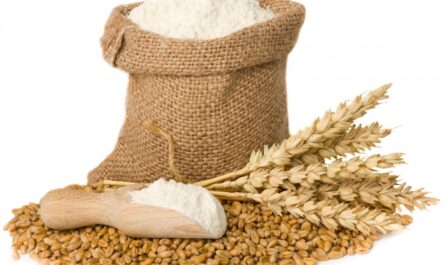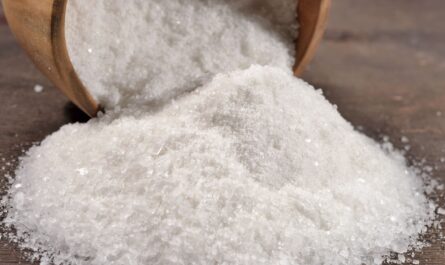Pea starch is a powder derived from yellow peas that is gaining popularity as a plant-based alternative to traditional starches in a variety of food and non-food applications. As consumers increasingly seek out sustainable and non-GMO options, pea starch offers a viable solution for many products.
What is Pea Starch?
The common yellow pea, scientifically known as Pisum sativum, has long been used for both human and animal consumption. However, pea starch extraction is a more recent development. To produce pea starch, yellow peas are soaked, ground, and separated using a centrifuge to isolate the starch from other components like proteins and fibers. This leaves a fine white powder that is tasteless and odorless.
Pea Starch particles are oval in shape rather than straight lines like corn or potato starches. This gives pea starch different textural and binding properties that can be leveraged depending on the intended application. The starch granules also have a less distinct lamellar structure compared to conventional starches like corn, making pea starch well suited for uses requiring smooth textures.
Uses in Food Products
Given its neutral flavor profile, pea starch is well-suited as a thickening, binding or emulsifying agent in many foods. It is commonly used as a thickener in soups, sauces, dressings and dips to improve mouthfeel without altering the taste. Pea starch also functions well as a fat mimetic to reduce oil or fat content while maintaining creaminess.
In baked goods like pasta, bread and cakes, pea starch acts as a gluten-free binder and replacement for wheat flour. The oval starch granules give baked goods a crispier exterior and softer interior versus corn-based alternatives. Pea starch is also effective for extending ground meat and poultry in foods like meatballs, burgers and sausages.
Non-Food Applications
Beyond food use, pea starch finds applications as a thickening agent in cosmetics, personal care and household products. In paints, coatings, paper and other industries, pea starch suspensions provide adhesive strength, suspension properties and films with competitive performance to traditional starches. Pea starch is fast gaining traction as a sustainable adhesive in the packaging industry as well.
Sustainability and Processing Benefits
Cultivation of peas requires less water, fertilizer and fossil fuel-based chemicals compared to crops like corn. Pea farming also supports crop rotation practices that improve soil fertility and restrict weed growth. Additionally, pea starch extraction and processing generates fewer greenhouse gas emissions per ton compared to corn or potato starch production.
From a functional standpoint, the oval particle shape makes pea starch highly dispersible in both hot and cold water. It yields smooth, stable mixtures and films/coatings without refrigeration requirements. The mild gel temperatures of pea starch also translate to energy savings during manufacture. Taken together, these processing efficiencies confer lower production costs compared to many alternative plant-based starches.
Regulatory Acceptance and Label-Friendly Profile
Pea starch is approved for use in most countries worldwide and carries the non-GMO and vegan labels favored by health-conscious consumers. With its clean label as a simple pea derivative, pea starch raises fewer questions than novel starches from new plant sources still undergoing review. This wide acceptance smooths market entry for products featuring pea starch as a prominent ingredient.
For manufacturers seeking a drop-in solution, pea starch performs many functions of wheat and corn starches without the gluten or major allergen concerns. This makes it an easy swap for many applications in the food industry aiming to expand their customer base. Non-food sectors also benefit from pea starch’s non-allergenic composition.
Outlook: Still Room for Growth
While global pea starch production reached over 200,000 metric tons in 2021, reserves remain largely untapped compared to mega-starches. As awareness of pea starch grows and more manufacturers evaluate its technical and sustainability merits, production capacity continues to expand annually to meet rising demand projections. Pea-growing regions are also optimizing harvests and yields to support long-term supply.
Pea starch offers food and non-food companies an innovative plant-based ingredient aligned with consumer values. Its mild flavor profile, versatile functionalities and clean label open up new formulation possibilities. With competitive production and an already positive regulatory standing, pea starch is well positioned for strong future adoption across multiple industries seeking sustainable solutions. Continued research will further optimize pea starch varieties and extraction techniques to maximize benefits.
*Note:
1. Source: Coherent Market Insights, Public sources, Desk research
2. We have leveraged AI tools to mine information and compile it




